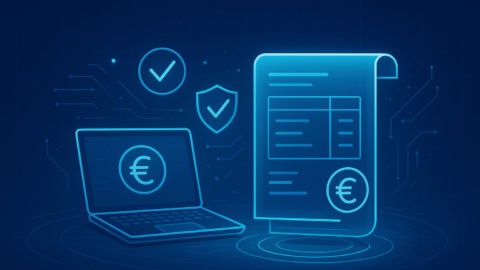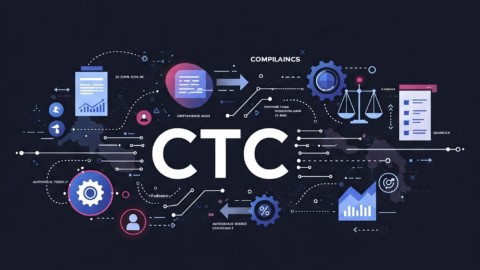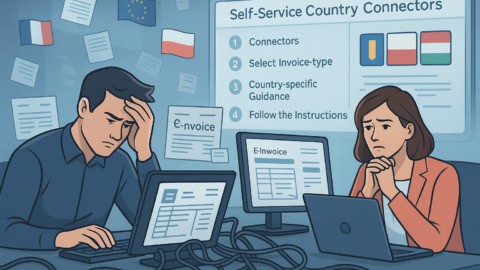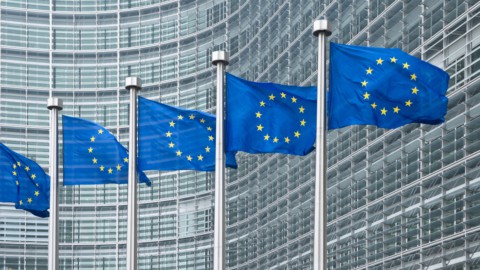Like other EU countries, in recent years Finland has introduced legislative changes relating to B2G electronic invoicing in order to meet EU Directive 2014/55/EU.
This article aims to shed light on the current state of play and what is needed for companies to comply with Finnish e-invoicing regulations.
The growth of e-invoicing in Finland
Finland has long been ahead of the curve when it comes to e-invoicing. This is particularly true of B2B e-invoicing – an area for which many EU countries have yet to create regulations. Regarding B2G e-invoicing in Finland, the figures are impressive too, with structured electronic invoices constituting over 92% of all invoices received by the central government (up from 64% at the beginning of 2012).
These numbers are largely a result of the fact that Finland has long understood the cost savings possible through increased automation. Following the 2014 EU directive, in 2015 a Finnish working group published a paper in which relevant bodies estimated possible savings to be €2.8 billion in invoicing between companies, €150 million for the local government sector and €150 million for the central government sector.
Although Finnish public bodies have accepted e-invoices from suppliers since 2010, until recently, there was no legal obligation for Finnish public entities to receive and process a particular type of e-invoice. This changed in February of 2019, when Finland’s parliament passed a law requiring public bodies to accept only electronic invoices whose data content corresponds to the semantic data model of the European Norm (EN). This legislation ensured Finland met the requirements of Directive 2014/55/EU. The deadlines for compliance were set as 1 April 2019 for central government bodies and 1 April 2020 for other public procurement entities.
1 April 2020 was also to be the date that the Finnish e-Invoicing Act 241/2019 came into effect. This law would have included the following two key extensions to the EU directive:
- E-invoicing compliance will be required for all invoices meeting national invoice thresholds, rather than higher EU thresholds (this approach has also been adopted by other countries such as Germany);
- Finnish public bodies as well as private entities with a turnover above €10,000 will be able to request and receive e-invoices conforming to the EN from another contracting entity or trader if desired. This would mean that organisations can reject e-invoices that do not comply with EN guidelines.
An unexpected delay
Unfortunately, due to Covid-19 and the knock-on effects on business and day-to-day life, the Finnish treasury released a statement on 18 March 2020 in which they revoked the 1 April deadline. As such, until further notice, non-central Finnish public entities and Finnish companies with turnover of over €10,000 are not required to be able to send and receive invoices meeting EU e-invoice standards and can still exchange older formats.
Despite this development, it is advised that Finnish businesses and those trading with Finnish businesses still attempt to achieve compliance with the planned regulations as soon as possible.
How to send e-invoices in Finland
The preferred way to send e-invoices to contracting public authorities in Finland is via Peppol.
Sending e-invoices via Peppol is extremely simple. Thanks to the structure of Peppol’s delivery network (known as the four corner model), all a business needs to exchange structured electronic invoices with partners is a connection to a certified Peppol access point (such as ecosio). Your provider will then be able to ensure documents are sent and received in the right format
Sending e-invoices without EDI capability
Unfortunately, without the ability to send structured electronic invoices automatically, businesses will be missing out on the many associated cost benefits of EDI. However, for those businesses unwilling to invest in securing EDI capability there are Web Portal solutions for sending e-invoices. An example for such a Web Portal is the Finnish government’s e-invoicing platform Handi.
Standards
When it comes to accepted e-invoicing standards, Finnish law currently allows businesses to trade e-invoices in whichever format they prefer (e.g. UBL or CII). However, central Finnish public bodies and those businesses looking to take advantage of the new e-invoicing legislation allowing companies to request e-invoices from partners are only able to accept the following two standards: TEAPPSXML 3.0 and Finvoice 3.0.
Both of these standards are XML-based and comply with the specifications laid out in Directive 2014/55/EU.
Finland is also currently drafting a Core Invoice Usage Specification (CIUS) in order to have a single document that companies can refer to which details all necessary requirements.
Finnish e-invoicing requirements at a glance
| STANDARDS | IS E-INVOICING MANDATORY? | CONNECTION METHODS |
|---|---|---|
|
Suppliers of central bodies:
Suppliers of non-central and private bodies:
|
Suppliers of central bodies: YesSuppliers of non-central and private bodies: Currently no, but customers will soon have the right to ask for an EN-compliant e-invoice |
|
What is the future of e-invoicing and EDI in Finland?
Although the implementation of the e-invoicing law initially proposed to come into effect on 1 April has been delayed by Covid-19, Finland’s decision to promote rejection of non-EN-compliant e-invoices is likely to have a significant impact. Not only will it encourage more B2B e-invoicing, it will also help to increase the number of businesses able to send invoices conforming to the EN standard.
Given the impressive number of Finnish businesses already utilising e-invoicing it shouldn’t be long until almost all B2B and B2G exchanges involving Finnish companies rely on structured electronic invoices. The next few years may also see Finland follow other forward-thinking countries such as Italy and Belgium, who have already begun to discuss implementing regulations relating to e-ordering.
At the very least, as more and more businesses begin to experience the benefits of automation (including public bodies), a growing number of supply chain businesses will surely seek to automate other key processes, as EDI capability becomes increasingly business-critical.
Want more information on e-invoicing in Finland?
At ecosio we have helped thousands of businesses to benefit from streamlined electronic data interchange and know exactly what efficient and reliable e-invoicing requires. For more information on e-invoicing in Finland and what steps you can take to achieve savings whilst minimising internal effort, please contact us today. We are always happy to answer your questions.
You may also be interested in our blog articles on e-invoicing in…
Are you aware of our free XML/Peppol document validator?
To help those in need of a simple and easy way to validate formats and file types, from CII (Cross-Industry Invoice) to UBL, we’ve created a free online validator.














